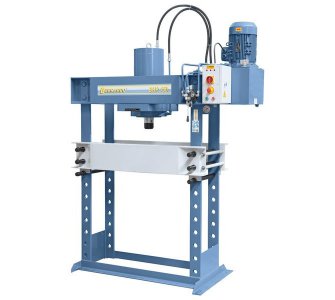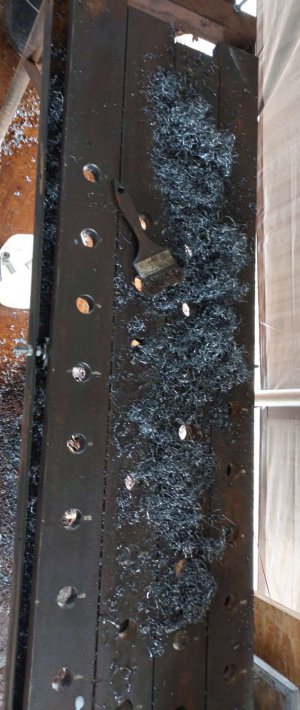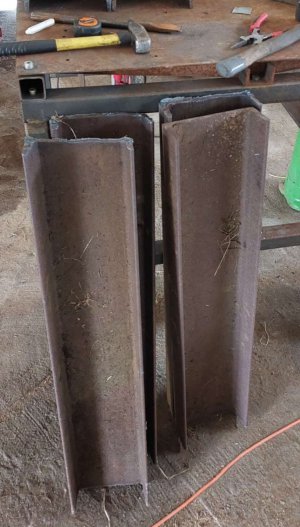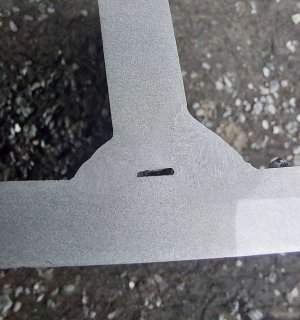I'm in a process of building a 50ton (upgradeable to 150t) diy press. I already have all the materials and devices. I have done a lot of stock prep, hole drilling etc. I calculated the loads for a 1m by 0.5m size inside, but I'm having doubts if I shouldn't make it a bit smaller.
BTW, to calculate how the metal will flex I use a bunch of free android programs by one author. They have names like "frame design", "beam design" and "profile design" and red logos.
It is showing me 0.6mm(20 thou) deflection with this size and material I chose so I could build it like that. However I'm having doubts regarding size due to ease of moving it around etc.
I need the press mainly for forging, also some bending. Occasional repairs (pressing bearings) I know for sheet steel bending the bigger the better. But due to ease of moving etc I'm thinking about making it 80% smaller.
So I thought to ask here if there is something additional I should consider. Did you build a press and realise you would prefer bigger etc?
Or perhaps, you would prefer it smaller due to less flex? Maybe there is some use I'm na t considering?
BTW, to calculate how the metal will flex I use a bunch of free android programs by one author. They have names like "frame design", "beam design" and "profile design" and red logos.
It is showing me 0.6mm(20 thou) deflection with this size and material I chose so I could build it like that. However I'm having doubts regarding size due to ease of moving it around etc.
I need the press mainly for forging, also some bending. Occasional repairs (pressing bearings) I know for sheet steel bending the bigger the better. But due to ease of moving etc I'm thinking about making it 80% smaller.
So I thought to ask here if there is something additional I should consider. Did you build a press and realise you would prefer bigger etc?
Or perhaps, you would prefer it smaller due to less flex? Maybe there is some use I'm na t considering?





